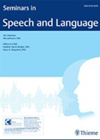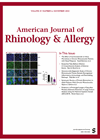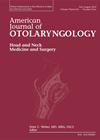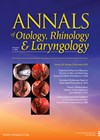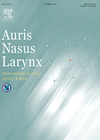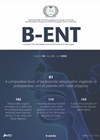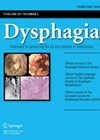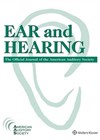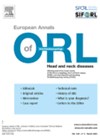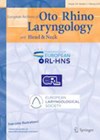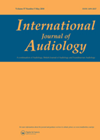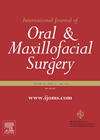
Journal Reviews
Feel what you say: a framework to demonstrate the emotional response to aphasia is intertwined with the emotional toll
The authors start this paper by flagging a recent study demonstrating that speech and language therapists in clinical practice rarely have time to focus on emotional issues in relation to aphasia. Yet, people with aphasia describe the close relationship between...
Balloon dilatation of the eustachian tube - largely very safe but not entirely without risk
Consent is a fundamental part of our daily working lives. This is something as simple as consent to examine a patient, consent to undertake a procedure as minor as taking blood, through to consent for a major operation. Whatever the...
Does transoral robotic surgery improve outcomes among patients with head and neck cancer of unknown primary?
A tonsillectomy and tongue base mucosectomy is becoming increasingly accepted as the optimal surgical intervention to aid in identifying the primary source of a p16+ / HPV-related squamous cell carcinoma (SCC) of unknown origin, given that this disease almost exclusively...
Newborn sensorineural hearing loss – what is the incidence?
In the last two decades, the introduction of newborn screening for hearing loss has dramatically lowered the average age of newborn hearing loss diagnosis to around two to three months of age. The benefits of early diagnosis are manifold, enabling...
Transtympanic plugging for chronic patulous eustachian tube
The authors developed a silicone plug (Kobayashi plug) to manage severe intractable patulous eustachian tube dysfunction (PET). This retrospective study investigates ET function after Kobayashi plug surgery, based on postoperative tympanic membrane (TM) findings and active opening (AO) of the...
Lymph node metastases in papillary thyroid cancer
This retrospective Korean cohort study looked at the risk factors associated with bilateral lateral lymph node metastases in patients with unilateral papillary thyroid cancer. There were 11 patients who met the inclusion criteria across an 11-year period from 2009 to...
Analysing videofluroscopy: does it matter how it’s done?
Videofluoroscopy, as a tool that assesses the process of swallowing, has transformed our understanding of dysphagia. Clinicians can observe the biomechanics of a bolus moving from the oral cavity through the pharynx and oesophagus and into the stomach. Over the...
How to increase uptake of hearing screening in primary care
Untreated hearing loss leads to an increased risk of dementia and depression. There is currently little evidence to support the benefits of hearing screening in asymptomatic older adults. The main aim of the study was to compare three hearing screening...
Septoplasty revisited
Septoplasty is one of the commonest rhinological surgeries performed. With the advent of minimally invasive surgical concepts, endoscopic targeted septoplasty was introduced. This study aimed to compare the complications and outcomes between endoscopic septoplasty and conventional septoplasty by a PRISMA...
Organoids in otolaryngology
This interesting review article summarises the status as well as future prospects of organoid technology in our field. Organoids are a mass of cells which are typically cultured in vitro with 3D technology. They simulate miniature tissues and organs and...
Audiologists’ perspectives on their ability to address hearing, social and emotional adult patient needs
Authors suggest there is little evidence that hearing technology addresses patients’ emotional concerns related to their lived experience of hearing and communication difficulty. The study explores the notion of audiologic counselling and discusses the role of audiologists in supporting the...
Helmets make a difference in bicycle injuries
This is a meta-analysis of maxillofacial injuries arising from riding a bicycle. The incidence of maxillofacial fractures in cycling accidents varies from 3-20% and, whilst the effectiveness of helmets in preventing traumatic brain injuries is well known, their protective effect...

